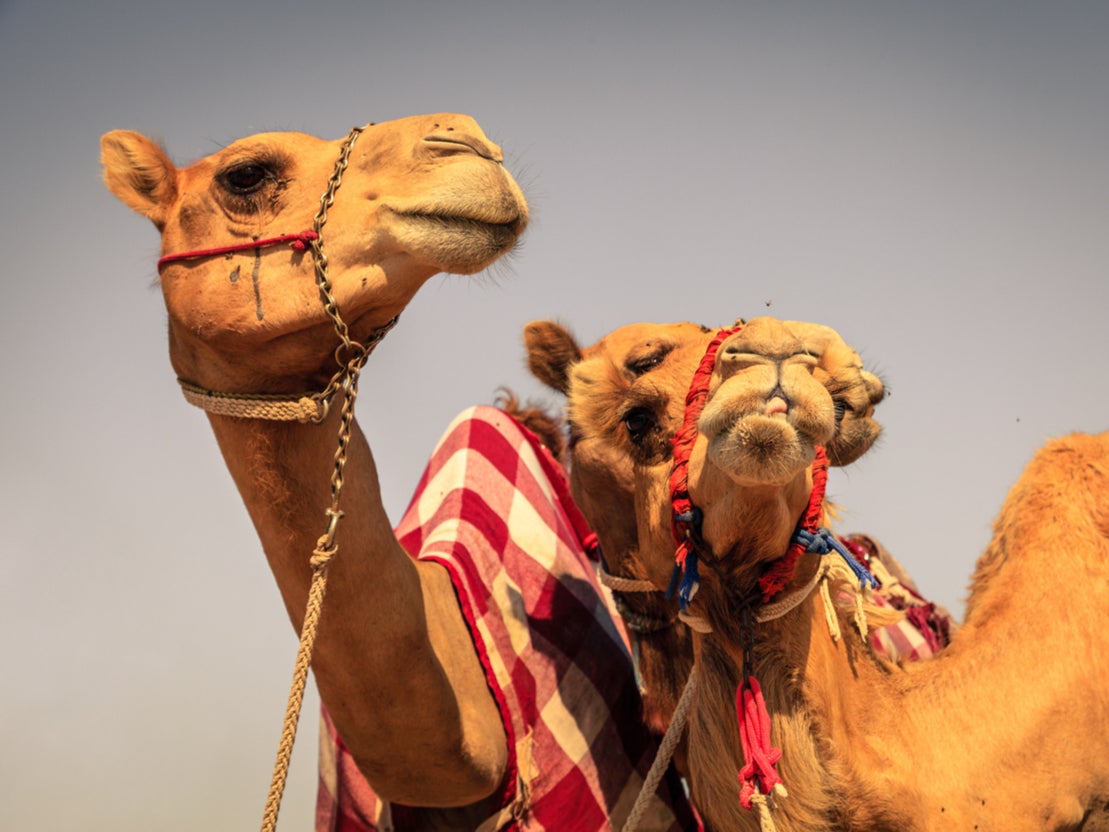Unesco intangible cultural heritage list 2020: From camel racing to competitive grass mowing
There are now more than 460 items included on the list

Your support helps us to tell the story
From reproductive rights to climate change to Big Tech, The Independent is on the ground when the story is developing. Whether it's investigating the financials of Elon Musk's pro-Trump PAC or producing our latest documentary, 'The A Word', which shines a light on the American women fighting for reproductive rights, we know how important it is to parse out the facts from the messaging.
At such a critical moment in US history, we need reporters on the ground. Your donation allows us to keep sending journalists to speak to both sides of the story.
The Independent is trusted by Americans across the entire political spectrum. And unlike many other quality news outlets, we choose not to lock Americans out of our reporting and analysis with paywalls. We believe quality journalism should be available to everyone, paid for by those who can afford it.
Your support makes all the difference.Unesco has revealed the new additions to its intangible cultural heritage list for 2020.
The 32 new entries span a broad range of “cultures”, with camel racing, competitive grass mowing, sauna culture, Christmas tree decoration production, pomegranate “festivities” and couscous all making the cut.
An intangible cultural heritage is a practice, representation, expression, knowledge, or skill considered by Unesco to be part of a place's cultural heritage.
The organisation has inscribed a total of 460 items onto the list since it first began.
Alongside selecting new examples each year, Unesco also identifies practices that are in need of urgent safeguarding.
Three additions met the criteria this year: Aixan /Gâna/ōb ǂans tsî //Khasigu, ancestral musical sound knowledge and skills from Namibia; handmade weaving in Upper Egypt; and traditional knowledge and techniques associated with Pasto Varnish mopa-mopa of Putumayo and Nariño in Colombia.
Aixan /Gâna/ōb ǂans tsî //Khasigu was allocated $99,239 from the Intangible Cultural Heritage Fund for its protection.
The addition of couscous to the list got a special mention after Algeria, Morocco, Tunisia and Mauritania all worked together on the entry.
It was hailed as an “example of international cooperation.”
Singapore also garnered its first entry on the list with its Hawker culture, where street food stalls comprising Chinese, Malay, Indian and other cultures come together.
“Hawker Culture holds a special place in the hearts of Singaporeans from all walks of life, and is a living heritage that reflects our everyday experience and identity as a multicultural society,” said Edwin Tong, Minister for Culture, Community and Youth.
“The nomination journey has also brought Singaporeans closer together and instilled a greater sense of pride for our Hawker Culture.”
Here’s the full list.
Unesco intangible cultural heritage list 2020
- Aixan /Gâna/ōb ǂans tsî //Khasigu, ancestral musical sound knowledge and skills; Namibia
- Handmade weaving in Upper Egypt; Egypt
- Traditional knowledge and techniques associated with Pasto Varnish mopa-mopa of Putumayo and Nariño; Colombia
- Al Aflaj, traditional irrigation network system in the UAE, oral traditions, knowledge and skills of construction, maintenance and equitable water distribution; United Arab Emirates
- Art of crafting and playing Mbira/Sansi, the finger-plucking traditional musical instrument; Malawi and Zimbabwe
- Art of miniature; Azerbaijan, Iran, Turkey and Uzbekistan
- Budima dance; Zambia
- Camel racing; United Arab Emirates and Oman
- Chamamé; Argentina
- Charfia fishing in the Kerkennah Islands; Tunisia
- Craftsmanship of mechanical watchmaking and art mechanics; Switzerland and France
- Grass mowing competition custom in Kupres; Bosnia and Herzegovina
- Handmade production of Christmas tree decorations from blown glass beads; Czechia
- Hawker culture; Singapore
- Il-Ftira, culinary art and culture of flattened sourdough bread; Malta
- Knowledge, know-how and practices pertaining to the production and consumption of couscous; Algeria, Mauritania, Morocco and Tunisia
- Musical art of horn players; France, Belgium, Luxembourg and Italy
- Nar Bayrami, traditional pomegranate festivity and culture; Azerbaijan
- Ong Chun/Wangchuan/Wangkang ceremony, rituals and related practices for maintaining the sustainable connection between man and the ocean; China and Malaysia
- Pantun; Indonesia and Malaysia
- Pilgrimage to the St Thaddeus Apostle Monastery; Iran and Armenia
- Practices and traditional knowledge of Terere in the culture of Pohã Ñana, Guaraní ancestral drink; Paraguay
- Sauna culture; Finland
- Taijiquan; China
- The art of glass beads; Italy and France
- Traditional intelligence and strategy game: Togyzqumalaq, Toguz Korgool, Mangala/Göçürme; Kazakhstan, Kyrgyzstan and Turkey
- Traditional skills, techniques and knowledge for the conservation and transmission of wooden architecture; Japan
- Traditional weaving of Al Sadu; Saudi Arabia and Kuwait
- Tree beekeeping culture; Poland Belarus
- Wine Horses; Spain
- Yeondeunghoe, lantern lighting festival; the Republic of Korea
- Zlakusa pottery making, hand-wheel pottery making in the village of Zlakusa; Serbia

Join our commenting forum
Join thought-provoking conversations, follow other Independent readers and see their replies
Comments